Small pets deserve treats that do more than just taste good. They need snacks that actually support their health and happiness.
The best healthy treats for small pets use natural ingredients like fruits, vegetables, and lean proteins. Avoid artificial additives, excess sugar, and weird preservatives whenever possible.
Your tiny companion’s treat choices can make a real difference in their energy, dental health, and overall wellbeing. Every bite counts for these little guys.
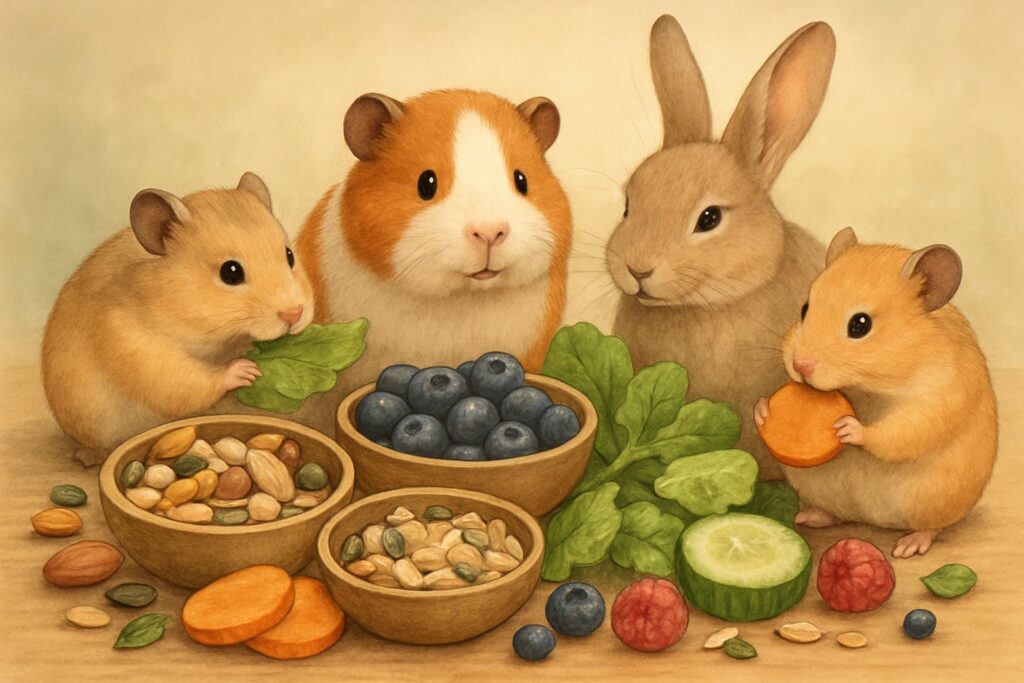
Table of Contents
I’ve seen too many pet parents unknowingly feed their small pets treats packed with empty calories and questionable stuff. The truth is, pet owners increasingly seek products that claim health benefits when choosing treats, but figuring out which ones are actually good can get overwhelming fast.
Your small pet’s size means every bite matters more for their daily nutrition. Sometimes, it feels like a single treat could make or break their whole day.
You’re about to find out which ingredients are worth seeking out, what treat types work for different small pets, and some easy ways to make healthy treating a habit. I’ll share tips on portion sizes and creative feeding ideas to keep your pet engaged and thriving.
Key Takeaways – Healthy Treats for Small Pets
- Healthy small pet treats should use natural ingredients and skip artificial additives that can stress their tiny systems
- Portion control is critical since treats shouldn’t provide more than 10% of your pet’s daily energy if you want to keep nutrition on track
- Fresh fruits, veggies, and specially formulated small pet treats usually offer the best mix of nutrition and safety
Why Healthy Treats Matter for Small Pets
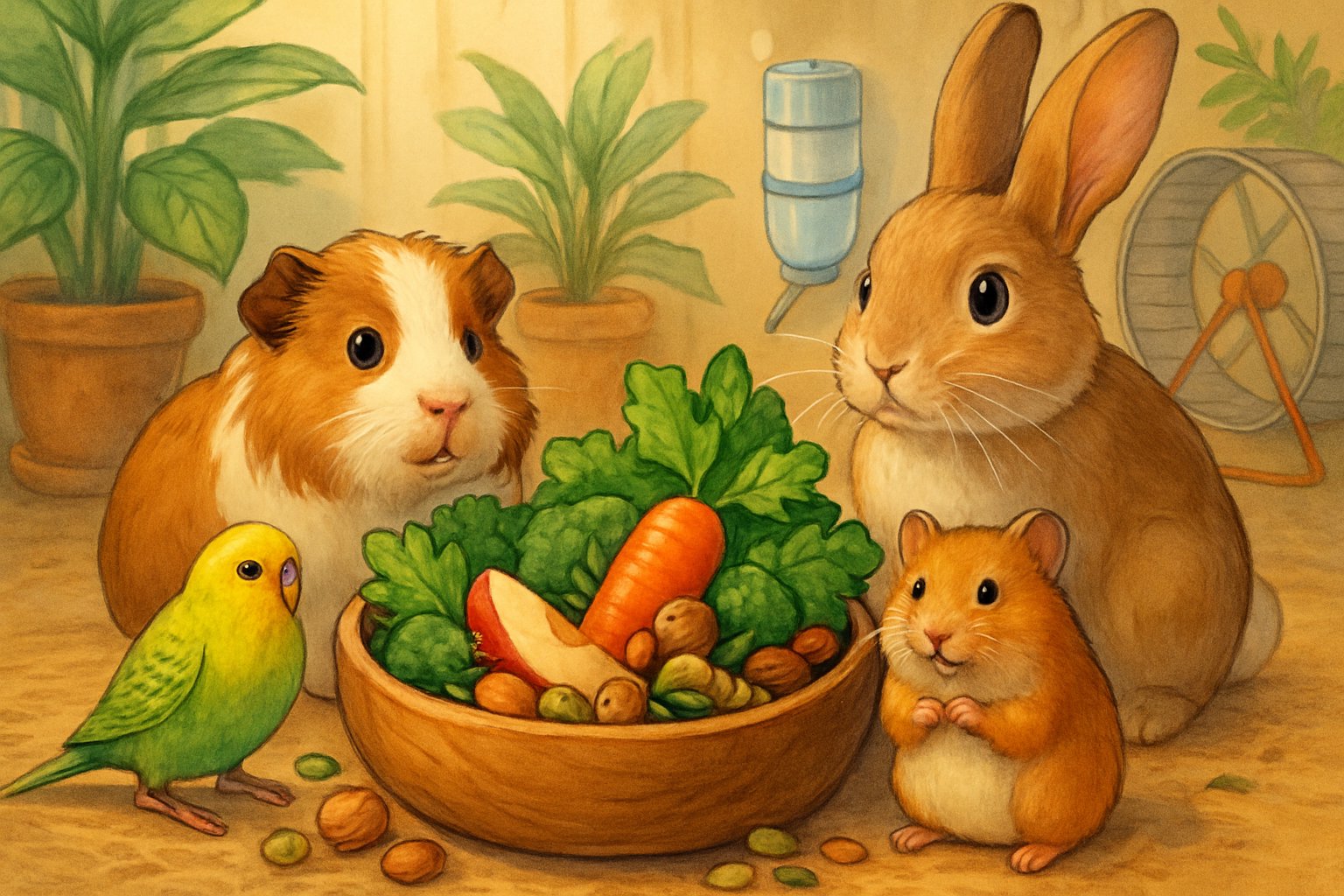
I’ve watched so many small dog owners underestimate how much their pup’s treats affect their health. The right treats boost energy and strengthen your bond, but the wrong ones can cause obesity, tummy trouble, and even behavior issues.
How Treats Impact Health and Happiness
Treats aren’t just rewards—they’re a real part of your small pet’s daily nutrition. I always try to keep treats under 10% of my dog’s daily calories, and experts recommend the same to keep things balanced.
Small dogs process nutrients differently than big breeds. They burn through calories faster and need nutrient-dense treats that actually help them out.
Quality treats support:
- Dental health—good for those little teeth
- Mental stimulation—especially during training
- Digestive wellness—thanks to the right fiber
- Joint support—with the right ingredients
I’ve noticed that pet owners see treat-giving as love, kind of like parenting. That emotional connection makes healthy choices even more important.
Best dog treats for small dogs start with real meat. Skip artificial colors, too much salt, or vague “by-products” that barely count as food.
Common Risks from the Wrong Treats
Poor treat choices can cause real trouble for small pets. I’ve seen owners accidentally hurt their dogs with snacks that seemed innocent enough.
High-sugar treats are especially risky. Some biscuits have up to 51.7g of sugar per 1000 calories—that’s over 5% of the dry matter!
Watch out for:
- Obesity—those empty calories add up fast
- Digestive upset—artificial stuff wreaks havoc on small bellies
- Dental decay—sticky, sugary treats are the worst
- Allergic reactions—corn and soy fillers cause problems for a lot of pets
Treats for small dogs need extra scrutiny. A big dog might shrug off a questionable ingredient, but it could really mess up a 5-pound Chihuahua.
I always remind people to read labels closely. If you see “meat meal” or a long list of chemicals, it’s probably not great.
Rawhide and large bones are big choking hazards for tiny mouths. Stick with treats sized for your pet.
Why Size and Portion Control Are Crucial
Size matters way more than most people think when it comes to treats. I’ve seen people give their 8-pound Yorkie the same treat they’d hand a Golden Retriever—yikes.
Portion tips:
- Treats should be no bigger than your dog’s mouth
- Break up large treats into smaller bits
- Measure treat calories—don’t just wing it
- Adjust regular meals if you’re giving extra treats
Small dogs have tiny stomachs—about the size of their fist. One big treat can fill them up, crowding out their actual food.
I recommend weighing treats at first to get a feel for portions. A 10-pound dog should get around 25-50 calories from treats daily, depending on how active they are.
Training treats should be pea-sized for small breeds. That way, you can give plenty of rewards without overdoing it.
The calorie count varies a lot—biscuits average 329 calories per 100g, while soft treats are about 294 per 100g.
Essential Ingredients in Nutrient-Packed Treats
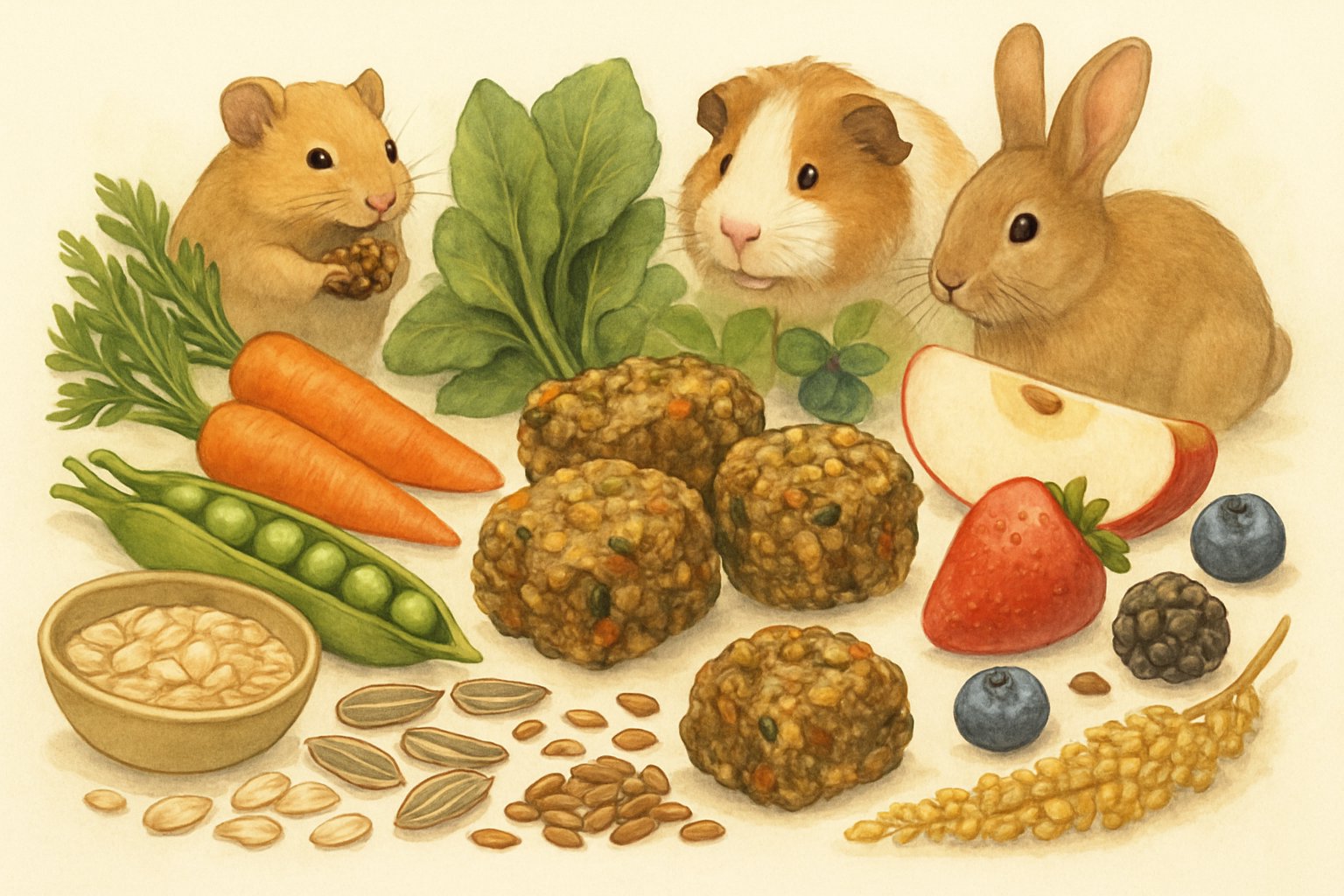
Reading treat labels can feel like a chore. But I find that focusing on whole foods, skipping the weird additives, and picking the right proteins really helps my small pet stay happy.
What to Look for (and Avoid) on Labels
Honestly, treat labels can look like a chemistry set exploded. I always flip the package over first when I’m shopping for my pets.
Look for these:
- Whole proteins like chicken, salmon, or turkey right at the top
- Single-ingredient treats—freeze-dried liver or sweet potato is great
- Recognizable foods—if you could find it in your kitchen, that’s a good sign
The best dog treats for small dogs use highly digestible proteins and real food ingredients that help their little bodies.
Skip these:
- Artificial colors (Red 40, Blue 2—no thanks)
- Chemical preservatives (BHA, BHT, ethoxyquin)
- Vague stuff like “meat by-products” or “animal digest”
- Lots of sugar or corn syrup
If the ingredient list is a mile long, I usually put it back. Simple is better, especially for pets with sensitive tummies.
Pro tip: The first three ingredients make up most of the treat. If they’re not whole foods, keep looking.
Natural, Organic, and Limited Ingredient Treats
Ever notice your small pet gets an upset stomach after certain treats? That’s when I switched to limited ingredient options—it made a big difference.
Natural treats use ingredients from nature, nothing artificial. Freeze-dried chicken or dehydrated sweet potato chips are good examples.
Organic treats go further—no pesticides, hormones, or antibiotics. That means less work for your pet’s liver and kidneys.
Nutrient-packed ingredients like leafy greens offer vitamins and fiber that help your pet feel their best.
Limited ingredient treats are awesome for:
- Pets with food sensitivities
- Senior pets who have more delicate digestion
- Trying out new proteins without a big risk
I love single-ingredient treats because I know exactly what’s inside. No guessing, no weird surprises.
My personal favorites:
- Freeze-dried organ meats
- Dehydrated fruits (like apple or banana)
- Air-dried fish skins
- Plain cooked sweet potato
These simple recipes with real foods are good for most small pets and usually easy to digest.
Novel Protein Sources and Allergy-Safe Options
If your small pet scratches all the time or has loose stools after treats, they might need novel proteins. I’ve been there—switching proteins changed everything for us.
Novel proteins are ones your pet hasn’t tried before. Their immune system usually doesn’t react to these new ingredients.
Popular novel protein treats:
- Duck – rich and flavorful
- Venison – lean and exotic
- Rabbit – gentle on sensitive stomachs
- Fish varieties (salmon, whitefish, sardines)
Animal proteins are generally of higher quality than plant-based options for meeting your pet’s nutritional needs.
Allergy-safe shopping tips:
- Read every label twice
- Start with single-protein treats
- Introduce one new protein at a time
- Watch for reactions for 48 hours
I keep a food diary when testing new treats. It helps me spot patterns if my small pet reacts.
Protein rotation benefits:
- Prevents food sensitivities from developing
- Provides varied nutrients
- Keeps treat time exciting
What works for my neighbor’s pet might not work for yours. Every small pet is different, so pay attention to how they respond to new ingredients.
Top Healthy Treat Types for Small Pets
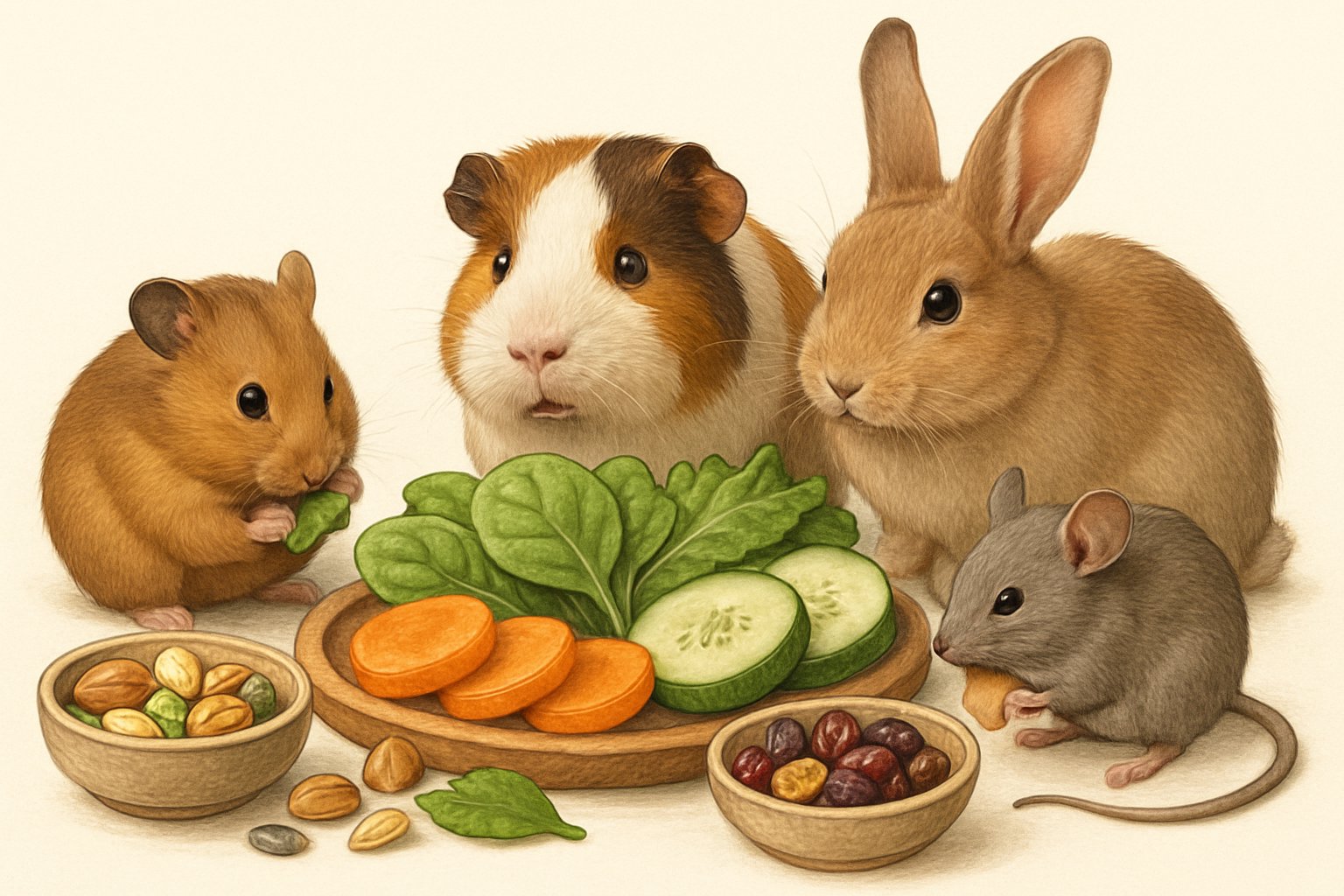
Finding the best dog treats for small dogs can feel overwhelming. There are endless options at every pet store.
I’ve noticed the healthiest treats fall into three main categories. Freeze-dried treats, homemade solutions, and natural superfoods hiding in your kitchen.
Freeze-Dried Treats: The Pros and Cons
Freeze-dried treats have become my go-to for small pet parents. The process removes moisture but keeps nutrients intact—nature’s way of preserving goodness, if you ask me.
Here’s what I love about them:
- Pure ingredients: Most use single proteins like chicken, beef, or fish
- Long shelf life: They stay fresh for months, no fridge needed
- Lightweight: Perfect for training sessions with tiny mouths
But they’re not perfect. The price tag can sting—a small bag often costs $15-20, and that adds up.
Some dogs get picky about texture. My friend’s Chihuahua refused freeze-dried liver until she broke it into smaller pieces.
Pro tip: Start with small samples before buying in bulk. Your pet’s taste buds—and your wallet—will thank you.
The convenience wins me over every time. No prep, no spoilage worries, just grab and go.
Homemade vs. Store-Bought Solutions
I’ll admit it—making treats at home felt intimidating at first. But after too many recalls on commercial products, I decided to take control.
Homemade treats give you total ingredient control. You know exactly what your pet eats. No weird preservatives or fillers that make you squint at the label.
Simple recipes work best:
- Sweet potato chips: Slice thin, bake at 250°F for 3 hours
- Frozen banana bites: Mash banana, freeze in ice cube trays
- Pumpkin balls: Mix pure pumpkin with oat flour, roll and bake
Store-bought options save time but require detective work. I spend minutes reading labels, hunting for short ingredient lists and familiar foods.
The science of dog treats shows that emotional connections drive our choices. We want to show love through food, and that’s just how it is.
My honest take: Mix both approaches. Homemade for special occasions, quality store-bought for busy weekdays.
Fruits, Veggies, and Everyday Superfoods
Your kitchen holds a treasure trove of healthy treats. I’ve watched dogs go wild for simple apple slices and carrot sticks.
Safe superfoods for small pets:
| Fruit/Veggie | Benefits | Serving Size |
|---|---|---|
| Blueberries | Antioxidants, brain health | 2-3 berries |
| Carrots | Dental health, vitamin A | 1-inch pieces |
| Green beans | Fiber, low calories | 2-3 beans |
| Sweet potato | Digestive health | Small cubes |
Never give these: grapes, onions, garlic, or chocolate. They’re toxic and can cause serious health problems.
I freeze blueberries in summer—they become tiny popsicles that keep my small dogs cool and happy. Green beans work like natural toothbrushes, cleaning teeth while they chew.
Smart storage tip: Prep veggie treats on Sunday and store them for the week. Your pet gets fresh nutrition, and you save time during busy mornings.
Portion control matters with small breeds. A whole apple slice might be too much for a 5-pound dog.
Choosing Treats for Small Dogs
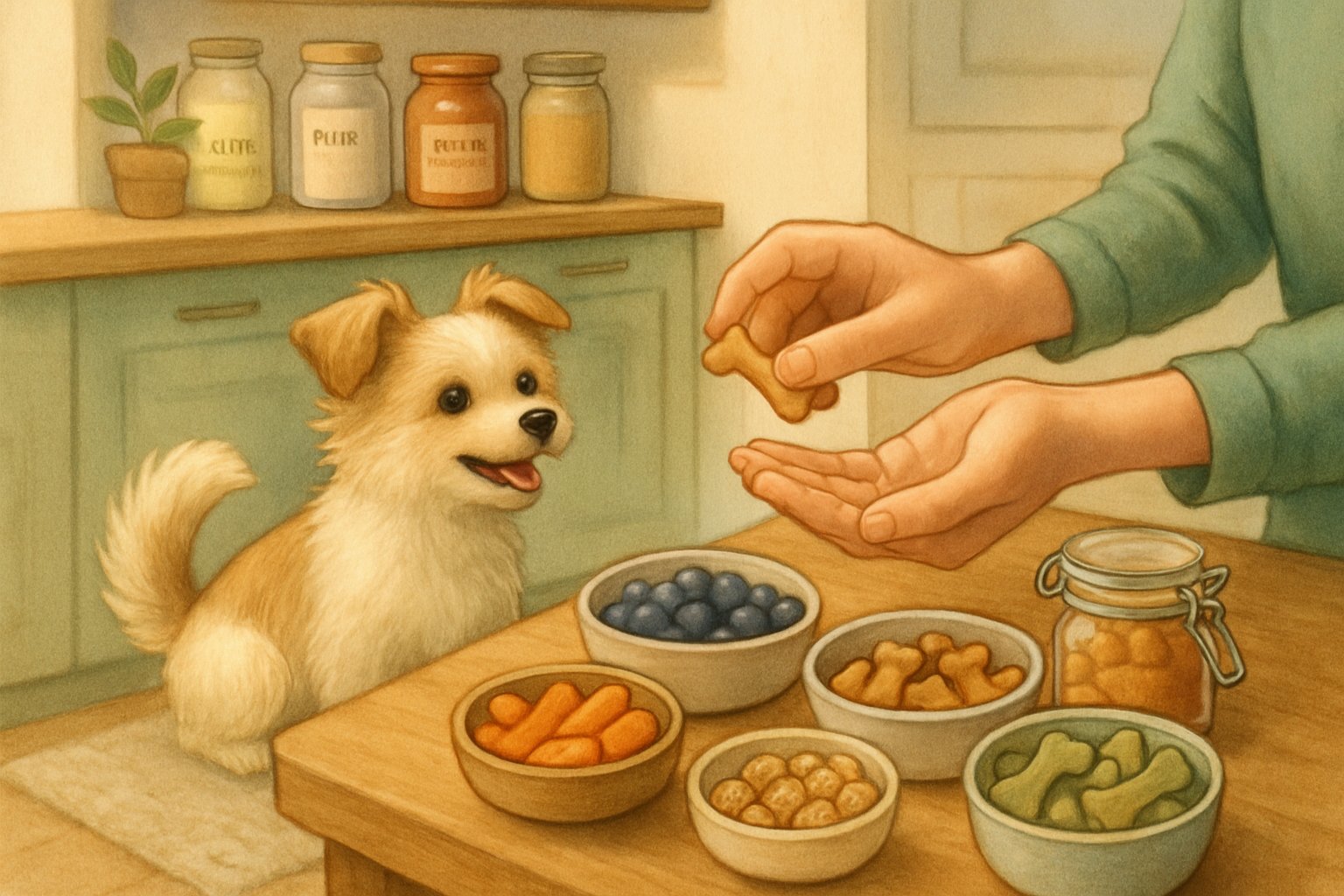
Small dogs need treats that match their tiny mouths and delicate digestive systems. The right texture and size prevent choking and support their unique health needs.
Texture, Size, and Safety Tips
I always tell small dog owners that size matters more than you think. A treat that’s perfect for a Golden Retriever could be a choking hazard for your Chihuahua.
Size Guidelines:
- Treats should be no larger than your dog’s mouth width
- Break larger treats into pea-sized pieces
- Choose treats under 10 calories each for dogs under 20 pounds
Soft treats work best for training sessions. They’re easy to chew quickly and won’t distract your pup from learning.
Crunchy biscuits are fine for leisure time but can slow down training momentum. Watch the ingredient list carefully—small dogs have faster metabolisms but smaller stomachs.
Avoid treats with artificial colors, too much salt, or sugar substitutes like xylitol. That stuff can be toxic.
I recommend the “10% rule”—treats should make up no more than 10% of your dog’s daily calories. For a 10-pound dog eating 400 calories daily, that’s just 40 calories in treats.
Dental, Functional, and Training Treats
Small dogs are prone to dental problems because their teeth are crowded in tiny mouths. Dental treats help maintain oral health by scraping away plaque as your dog chews.
Look for dental chews with the VOHC (Veterinary Oral Health Council) seal. These treats meet specific standards for reducing tartar and plaque buildup.
Training Treat Features:
- High value: Chicken, liver, or cheese flavors
- Small size: Easy to eat in 2-3 seconds
- Soft texture: Won’t break apart in your pocket
Functional treats serve double duty. Calming treats with chamomile help anxious small dogs. Joint support treats with glucosamine help aging toy breeds prone to luxating patella.
I’ve found that freeze-dried liver or small training biscuits work best for most small dogs. They’re irresistible but don’t upset sensitive stomachs.
Keep portions tiny—even the best dog treats for small dogs can cause weight gain if you go overboard.
Creative Treat Hacks and Feeding Tips
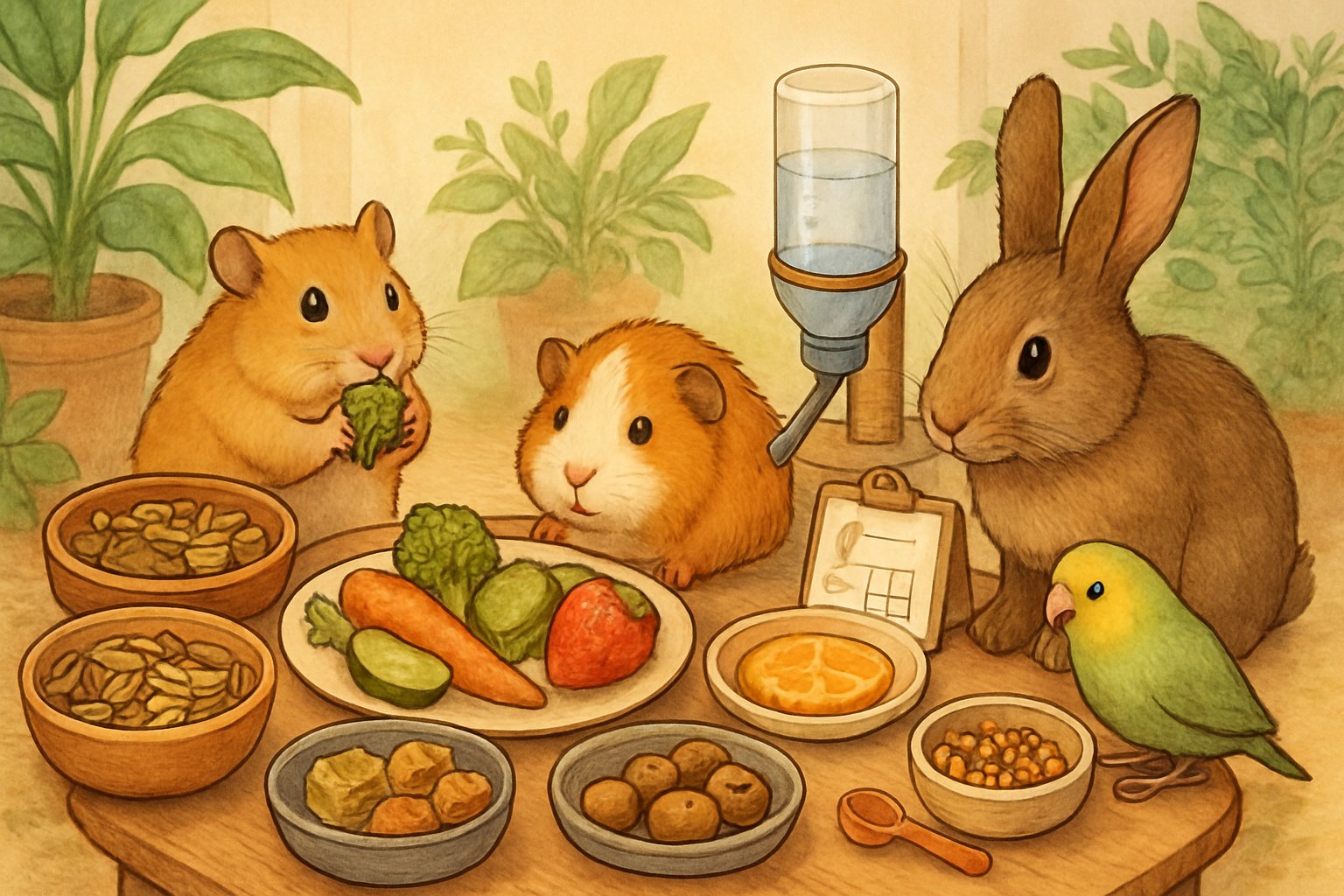
Getting creative with treats for small dogs transforms snack time into bonding moments. Smart timing prevents overindulgence, and homemade recipes can tempt even picky eaters.
Mindful Treat Timing and Frequency
Ever noticed how your small dog’s eyes light up every time you reach for the treat jar? I’ve learned that timing is everything when it comes to healthy treat habits.
The 10% rule works like magic. Keep treats under 10% of your dog’s daily calories.
For a 10-pound dog, that’s roughly 40-50 calories in treats per day. Pre-meal treats actually help digestion.
I give my small dogs tiny treats 15-20 minutes before meals to boost their appetite. This works especially well for senior dogs or picky eaters.
Training sessions are perfect treat opportunities. Break treats into pea-sized pieces for small dogs.
You’ll use fewer calories while keeping their attention sharp. Evening treat cutoff matters too.
Stop giving treats 2 hours before bedtime. This prevents midnight bathroom breaks and helps maintain healthy sleep patterns.
Here’s my daily treat schedule that works:
- Morning: One small training treat after potty success
- Mid-day: Puzzle toy with low-calorie treats
- Afternoon: Post-walk reward (tiny piece)
- Early evening: Final training session treats
DIY Recipe Ideas for Picky Eaters
Let’s be real—some small dogs act like food critics at a five-star restaurant. I’ve cracked the code on homemade treats that even the fussiest eaters can’t resist.
Frozen pumpkin drops are my secret weapon. Mix 2 tablespoons pure pumpkin with 1 tablespoon plain Greek yogurt, then freeze in ice cube trays for about 2 hours.
These treats give natural fiber and probiotics. Dogs seem to love the creamy chill.
Sweet potato chips solve the crunchy craving. Slice sweet potatoes paper-thin and bake at 200°F for 3 hours until crispy.
No oil needed—just pure nutrition. They come out with a satisfying snap.
For protein-loving picky eaters, try chicken and rice balls:
- 1/2 cup cooked chicken (shredded)
- 1/4 cup cooked brown rice
- 1 egg white
- Roll into marble-sized balls, bake 15 minutes at 350°F
Apple cinnamon bites work magic on dogs who ignore store-bought treats. Core and slice apples thin, sprinkle with cinnamon, and dehydrate for about 6 hours.
The key is texture variety. Some small dogs want soft treats, others demand crunch.
I always test both versions of new recipes. Preferences can surprise you.
Pro tip: Freeze-dry your homemade treats in small batches. They’ll last longer and keep that irresistible crunch picky eaters crave.
Frequently Asked Questions
Pet owners often wonder about the best healthy treat options for their furry friends. How do you make smart choices that support your pet’s wellbeing?
What are the top homemade snack recipes that’ll keep your pup both happy and healthy?
I’ve found that simple, single-ingredient treats work best for most dogs. Frozen sweet potato slices are my go-to—just slice them thin and bake at 250°F for about 3 hours until they’re chewy.
Peanut butter frozen treats are another winner. I mix unsalted, xylitol-free peanut butter with plain yogurt and freeze it in ice cube trays.
For something crunchy, I make dehydrated chicken strips. Slice chicken breast thin and dehydrate for 6–8 hours.
Your pup will probably go wild for them. Apple and oat bites work great too.
I combine diced apples (seeds out) with oats and a splash of water, then bake small portions until they’re firm. Simple and satisfying.
Mind sharing a few treats that can help an overweight doggo slim down without feeling deprived?
Low-calorie treats are a game-changer for weight management. I always recommend carrot sticks first—they’re crunchy, sweet, and only about 4 calories per baby carrot.
Green beans (plain, no salt) are another fantastic option. Many dogs love the crunch, and they’re practically calorie-free.
Research shows that dog caregivers often struggle with weight management goals, but these alternatives really help.
Cucumber slices work perfectly for dogs who need something refreshing. Frozen blueberries give that “special treat” feeling while packing antioxidants and staying under 5 calories per treat.
I freeze them individually so they don’t clump together. Handy and delicious.
Any go-to natural treats that pets go nuts for without the added gunk?
Freeze-dried liver tops my list every time. It’s pure protein with no additives, and I’ve never met a dog who didn’t love it.
Bully sticks from grass-fed cattle are fantastic for longer chewing sessions. Just make sure they’re single-ingredient with no preservatives.
I’m obsessed with dehydrated fish skins—they’re omega-3 rich and most pets find them irresistible. Look for wild-caught options without any processing chemicals.
Raw meaty bones appropriate for your dog’s size work wonderfully. Think chicken necks for small dogs or beef knuckle bones for larger breeds.
Those puppy eyes begging for your snack—what human foods can you actually share guilt-free?
Plain cooked chicken is always safe and most dogs go wild for it. I keep some in the fridge specifically for treat moments.
Banana slices work great in moderation—they’re sweet and potassium-rich. Just remember they’re higher in sugar, so keep portions small.
Studies show that feeding human food weekly can contribute to weight issues, so I stick to healthy options. Plain rice cakes broken into pieces satisfy that “sharing” urge.
Watermelon chunks (seedless) are perfect for hot days. Most dogs love the texture and it’s mostly water.
Never share chocolate, grapes, onions, or anything with xylitol. When in doubt, stick to dog-specific treats.
Small dog owners, have you discovered treats that are just the right size for our little friends?
Training treats specifically sized for small breeds are my lifesaver. Look for pieces smaller than your pinky nail—perfect for tiny mouths.
I love freeze-dried meat crumbles. You can break them into whatever size works for your little one, and they pack serious flavor punch.
Mini dental chews designed for dogs under 25 pounds work perfectly. They’re proportioned right and won’t overwhelm small jaws.
Broken rice cakes let me control the exact size. I can make pieces as small as needed for my tiniest clients.
For homemade options, I use mini ice cube trays for frozen treats. The portions come out perfectly sized for small breed mouths.
When picking a treat off the shelf, any brands that stand out for their health benefits?
I always check the ingredient list first.
Single-ingredient treats like freeze-dried organs or just plain sweet potato usually win for me.
Look for brands that skip by-products, artificial colors, and preservatives.
The shorter the ingredient list, the more comfortable I feel recommending it.
Limited ingredient treats are a good pick for dogs with sensitivities.
Lots of premium brands now make simple recipes with just a handful—maybe 3-5—of ingredients you actually recognize.
I lean toward treats made in facilities that also handle human food since they tend to have tighter quality controls.
It’s worth checking where the treats are manufactured too. Sometimes that makes all the difference.
Research suggests that pet owners look for products with claimed health benefits, but honestly, I trust simple, natural options more than marketing buzzwords.



Leave a Reply